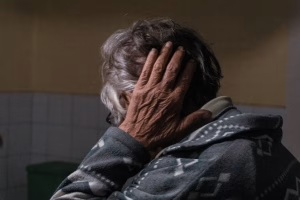What does a headache on the left side mean: What Is It, How Is It Related To Your Body?
Headaches are not an unusual problem, and there can be different types of headaches involving one-sided pain in the head. A left-sided headache can be alarming, especially if the discomfort is severe or frequent. Learn about the potential reasons, accompanying symptoms, and solutions to alleviate unnecessary fear while offering helpful management practices.
Grasping Left Side Headache
Headaches over the left side of the head are not a condition on their own; they are just one symptom among several, and there are many possible root causes. Depending on the cause, pain can vary from mild and dull to sharp and throbbing.
Often, the site of the pain is diagnostic and points to a source, but further symptoms and the character of the headache are also important.
Left-sided headaches might be due to something as simple as primary headache disorders, such as migraines or tension headaches, or a secondary cause like sinus infections, all the way to serious conditions.
Localized headaches are mostly a case-specific matter and must require intricate evaluation to identify the trigger that should be cured.
Reasons Why a Headache is Experienced in the Left Side
Migraines
Migraines are a frequent trigger of one-sided headaches (including on the left side). They generally talk associated with moderate to severe pain like a pounding within the head and can last anything from several hours until days. A migraine headache may be accompanied by other symptoms, such as nausea and vomiting and extreme sensitivity to light and sound.
Common migraine triggers include hormonal changes, stress, certain foods, or sensory stimuli. People suffering from migraines might observe that their head pain always involves the left side of the head.
Tension Headaches
Another common origin for leftsided head pain is tension headaches. He described these headaches as a dull or aching sensation typically at the temples and like tight bands around the head. Things like stress, poor posture, and muscle tension in the neck and shoulders can be common culprits.
Most tension headaches are not accompanied by other symptoms such as nausea or sensitivity to light, as is commonly the case with migraines.
Cluster Headaches
Cluster headaches are a rarer but very painful type of headache that usually occurs one-sided, frequently around the eye or temple. These are severe pain attacks lasting 15 minutes to three hours and accompanied by redness or tearing in the affected eye, nasal congestion, or restlessness.
These attacks are cyclical, lasting for weeks or months at a time before entering remission.
Sinus Headaches
Post-nasal drip and sinus infection Pain on left side of head can arise from sinusitis or a sinus infection if the left-side sinuses are involved. It may be associated with nasal congestion, runny nose, fever and pressure on the forehead or cheeks. Sinus headaches are generally aggravated by bending forward and also when lying down.
Occipital Neuralgia
Occipital neuralgia occurs irritation or inflammation of the occipital nerves, which run from the top of the spine to the scalp. This can trigger piercing, jabbing pain, or a burning feeling on one side of the head and sometimes the left aspect of the scalp, behind the ear, or at the base of the skull.
Temporal Arteritis
Temporal arteritis (also called giant cell arteritis) [IL6] is a disease characterized by inflammation of the blood vessels in the temples. More likely to be found in older adults, it causes pulsating pain on one side of the head, which can also affect the left side. Other symptoms can be scalp tenderness, jaw pain, and blurred vision. It is essential that temporal arteritis be treated quickly to prevent complications.
Other Causes
Less common or severe conditions can also cause headaches on the left side, such as:
Trauma: Concussions or head injuries can lead to certain pain points.

Stroke: A sudden, severe headache on the left side with neurological symptoms may signal a stroke, but this is very rare.
Tumor: While rare, chronic headaches that progressively worsen may be associated with brain tumors.
Referred Pain: Conditions like an infected tooth or TMJ dysfunction can lead to pain on the left side of the head.
How to Know When You Need Medical Care
Although the majority of headaches on the left side are benign, there are a number of features that can arise with them that require urgent medical assessment. If the headache is sudden and severe (also known as a “thunderclap headache), seek immediate medical care; it can be a sign of an acute, life-threatening condition such as brienacuarasyle or stroke.
Other warning signs include:
Chronic headaches that are unresponsive to OTC medications.
Headaches with mental confusion, slurred speech, or weakness on one side of the body.
They include: fever, stiff neck, or changes to your vision.
Tension headaches after hitting your head
Patterns of headaches not seen before, for example, early morning headaches that wake you.
Chances are, if you get it taken care of early, it can often be treated without issue, which in turn helps to create further issues down the road.
Remedies and Treatments
The cause of a left-sided headache determines the treatment. Over-the-counter pain relievers like ibuprofen or acetaminophen are commonly adequate for primary headaches, such as migraines or tension headaches. But finding triggers and avoiding them is a key way to avoid more episodes.
Migraines
If it is truly a migraine, you may need to resort to prescription medications (triptans) for symptom relief. Medications to prevent attacks, such as beta-blockers, antidepressants, or seizure medicines, can help decrease how often they happen. Lifestyle modifications—sleeping at the same times each day, using relaxation techniques, and staying clear of triggers you recognize are effective too.
Tension Headaches
These types of headaches usually respond well to relaxation techniques, gentle stretching, and heat therapy. Avoiding sources of stress and correcting posture can prevent these headaches from occurring.
Cluster Headaches
Although cluster headaches may be treated with oxygen therapy, injectable triptans, and, in some cases, preventive medications such as verapamil. The fact that cluster headaches are so damaging means that, often, it takes a headache doctor to manage effectively.
Sinus Headaches
Sinus headaches are typically caused by a sinus infection or an allergy, which is the root cause that, if treated, would resolve the headache. Symptom relief can be provided with decongestants, nasal irrigation, and warm compresses. If the cause is bacterial sinusitis, then antibiotics may be required.
Occipital Neuralgia
Most occipital neuralgia cases tend to respond well with medications like muscle relaxants, anti-inflammatory drugs, or nerve blocks. You may also try physical therapy and stretching exercises that can aid as well.
Temporal Arteritis
Temporal arteritis requires immediate treatment with corticosteroids to reduce inflammation and avoid complications such as vision loss.
Prevention Tips
Headaches on the left side can be avoided by eliminating possible triggers and engaging in healthy lifestyle habits. Here are some of the most fruitful approaches:
Stress Management: Take part in relaxation exercises, such as deep breathing, meditation, or yoga.
Drink Water: One of the common triggers for headaches is dehydration. You should take care to have enough water throughout the day.
Adequate Sleep: Keeping a regular sleep schedule can help stave off various headaches.
Keeping Good Posture: Try to reduce your muscle and sit less or read a screen.
Keeping a list of headaches to find the triggers can help in treatment / prevention.




Leave a Reply